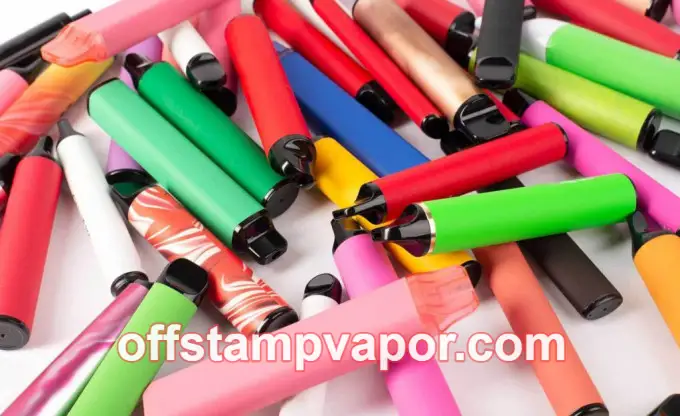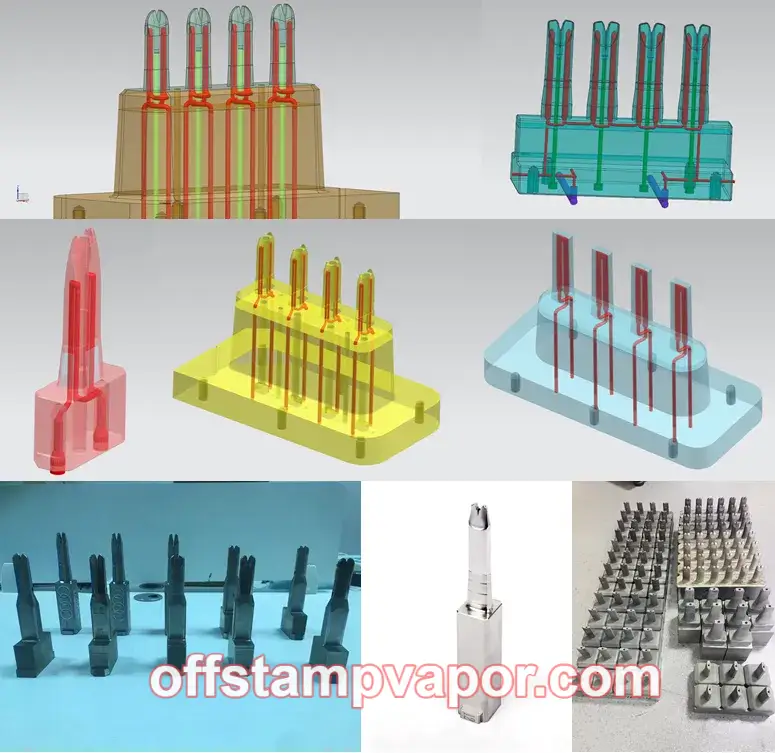2025 Vape Revolution: The 9 Major Breakthroughs in Materials and Technology
The global vape market is on an upward trajectory, expected to grow at a whopping 12.3% CAGR, reaching $86.3 billion by 2025 (according to Grand View Research 2024). As the industry faces increasing pressure from the FDA’s PMTA certification and the EU’s TPD III regulations, vaping technology is undergoing a major transformation. The driving forces? Advanced material engineering and precision manufacturing. Let’s dive into the 9 major breakthroughs in next-generation vaping tech.
1. Vape Coil Materials: From Thermodynamics to Molecular Structure Design

1.1 Multilevel Porous Ceramic Cores: The Topological Revolution
Picture this: a vape coil that’s not just a simple ceramic but one that’s been designed with a fractal geometry model to achieve a multi-scale pore structure, with pore sizes ranging from 0.5 to 50μm. Unlike traditional ceramic coils, which have only a single pore size, this breakthrough enables more uniform vaporization and more efficient nicotine delivery.
Real-world Example: The FEELM Hive 2.0 ceramic core, developed by the vape giant, boasts a Vapor Uniformity Index (VUI) of 0.92—well above the industry standard of 0.75. This means the vape experience is smoother, with a 41% improvement in nicotine transfer efficiency.
Manufacturing Advancements: Thanks to the introduction of nano-level pore-forming agents, the yield rate of this ceramic core increased from 62% to 88% in early 2024, making it ready for large-scale production.
1.2 Metal Matrix Composites: Cross-Industry Experimentation
In a surprising turn, military-grade technology is finding its way into the vape world. Plasma-sprayed, heat-isostatically-pressed (PS-HIP) titanium alloy cores, enhanced with Al₂O₃/ZrO₂ gradient layers, are improving the durability and heat transfer properties of vape coils. This innovative combo significantly boosts resistance to high temperatures, with thermal conductivity rates doubling compared to standard materials.
Performance Boost: The new design withstood 2000 hours of salt spray testing, a notable improvement over the typical 500 hours for stainless steel cores. Thermal conductivity has also seen a 2-3x boost, making vaping performance more consistent and long-lasting.
Cost Implications: While the unit cost per vape coil rises slightly to $0.38 from the traditional $0.21, the extended lifespan of the components reduces the overall Lifetime Cost of Ownership (LCC) by 27%.
1.3 Graphene-enhanced Phase Change Materials: The New Standard in Thermal Management
If you think graphene is just a buzzword, think again. This miracle material is being used in phase-change materials (PCMs) to create more stable and consistent vape temperatures. Several companies are experimenting with graphene-based solutions, including GiKER, who launched a Graphene-FeCrAl composite vaporization mesh in 2024.
Results: Computational simulations show that these materials can stabilize vaporization temperatures within ±3°C, drastically reducing the chance of burnt coils and providing a more consistent vaping experience.
2. Eco-Friendly Materials: Dual Paths of Bioplastics and Recycling

2.1 High-Temperature Plant-Based Composites
As sustainability takes center stage, many vape manufacturers are turning to bio-based composites for cartridge components. For instance, RELX introduced a "Zero Carbon Vape Pod" made from a PLA/PBAT/nano-cellulose blend. This unique mixture offers higher mechanical strength than traditional ABS plastics, with a flexural modulus of 3.2 GPa (compared to 2.8 GPa for ABS), and it performs well even at high temperatures (with less than 0.3mm deformation at 230°C).
Challenges in Production: The manufacturing process requires longer injection molding times to control crystallization, and the industry’s average production capacity is currently only 68%. However, the push for greener alternatives is undeniable.
2.2 Chemical Recycling: Closing the Loop
Recycling isn’t just about sorting your waste—it’s about building a truly sustainable system. The EVE Energy Group has led the charge in developing a chemical recycling alliance, which focuses on using supercritical CO₂ to break down vape cartridge materials into reusable components.
Tech Insights: PETG vape pods have shown a recovery purity rate of 99.97%, much higher than traditional physical recycling processes that only achieve about 85% purity. At larger scales (over 500 tons per month), this process could reduce the cost of recycled materials by up to 13%.
3. Precision Manufacturing: Micro-Molding and Digital Production Lines

3.1 Micro Injection Molding (μIM): Pushing the Limits of Precision
In the quest for perfection, micro-injection molding (μIM) technology has made waves by allowing for ultra-precise vaporizer chamber walls as thin as 0.2mm, with weight deviation staying under 0.8%—far better than the industry’s typical ±3%. By integrating in-mold induction heating systems, companies like Lihe Electronics are pushing the boundaries of precision manufacturing.
The Financial Trade-off: While the equipment investment for this cutting-edge technology is substantial ($220,000 per machine vs. $75,000 for traditional setups), the reduction in defective units allows for a fast return on investment—around 14 months.
3.2 Roll-to-Roll (R2R) Nano-Embossing: Speeding Up Production
Speed matters when it comes to mass production, and Roll-to-Roll (R2R) nano-embossing technology is speeding things up significantly. McWale Electronics has revolutionized ceramic substrates by embossing microchannels at a resolution of 5μm, increasing e-liquid absorption by six times. With a production line speed of 3 meters per minute, R2R technology cuts unit costs by nearly half compared to traditional silk-screen printing methods.
Competitive Edge: Japan’s companies dominate the core patents in this space, with Fujifilm and Toray holding a combined 62% share. This has raised concerns for global manufacturers, especially when it comes to potential patent restrictions.
4. Cross-Industry Technology Integration: From Medical to Aerospace
4.1 Atomic Layer Deposition (ALD): A Protective Revolution
One of the most intriguing advancements in vape technology is the use of Atomic Layer Deposition (ALD), which allows for ultra-thin nanocoatings on ceramic surfaces. This technique is making waves with companies like BYD Electronics, who have integrated ALD to create protective coatings of Al₂O₃/TiO₂ on ceramic coils, preventing harmful heavy metals from leaching into the vapor.
Key Metrics: The technology can keep heavy metal emissions under 0.01μg per puff, a massive reduction from the regulatory limit of 0.5μg. However, the slow deposition rate (0.3nm per minute) remains a bottleneck for scaling up production.
4.2 Microwave-Assisted Vaporization: A Game-Changer
A fascinating crossover from the aerospace industry is the microwave-assisted vaporization technology being developed by China Electronics Technology Group Corporation (CETC). Using millimeter-wave resonant cavities, this method enables non-contact energy transfer to e-liquids, improving atomization efficiency and reducing temperature fluctuations to just ±1.5°C.
The Barrier: The major challenge with this technology is its high energy consumption, with current prototypes requiring up to 8W of power compared to the 2-3W of traditional vaporizers. Until battery technology advances, this could limit commercial viability.
5. 2025 Technology Risk Warning: Navigating the Patent Jungle and Regulatory Landscape

5.1 Patent Thickets
As the vaping industry evolves, patent wars are heating up. Philip Morris holds 23 patents related to nicotine salt crystal structures, potentially restricting competition with a 337 investigation. Additionally, JUUL Labs holds patents for nicotine release technologies, with a massive 68% coverage of the market.
5.2 Regulatory Compliance Costs
New regulations are adding complexity and costs to vape manufacturing. For instance, the EU’s TPD III regulations stipulate that vape liquids must contain less than 10ppb of heavy metals. Meeting these standards requires additional processing steps, raising the per-unit cost by $0.15.
Meanwhile, in the U.S., the FDA PMTA certification requires hefty investments, with nearly half of the total cost going towards material safety testing.
Conclusion: The Future of Vaping in 2025
As vaping technology enters an era where nano, second, and molecular precision drive competition, companies that can stay ahead in material databases and manufacturing know-how will thrive. Leading firms are already investing heavily in R&D, with their research teams accounting for over 22% of their workforce (2023 annual reports). The industry is moving away from manufacturing-based advantages toward a focus on intellectual capital and innovative techniques.
Looking ahead to 2025, vapers can expect more sustainable products, precise performance, and innovative new flavors, with options like Off Stamp Vape Flavors leading the way. Stay tuned—it's going to be an exciting ride!
Feel free to check out Off Stamp Vapes for the latest flavors and experience a whole new level of vaping. Whether you're after something smooth and subtle or bold and flavorful, Off Stamp Vape Flavors are designed to give you the best experience.
